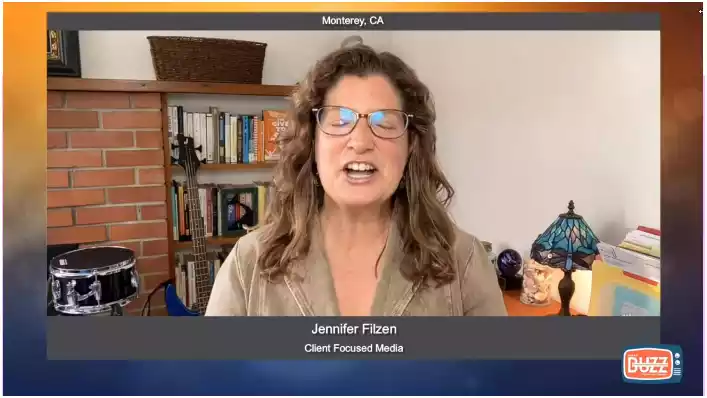Prior Authorization for Medication: Navigating the Process

Hey! If you’re curious about the nitty-gritty of Prior Authorization for Medications, you’ll find this Portiva blog super helpful. It’s a friendly guide that explains why these authorizations are important, how they work, and what medications often need them. Perfect for anyone in healthcare who wants to make sense of these processes without getting lost in jargon.
Let’s get started.
Table of Contents
Prior authorization, or pre-authorization and precertification, is when health plans required patients to obtain approval for a healthcare service or medication before it is provided. This requirement enables the plan to assess the patient’s medical necessity.
The plans typically establish the review criteria for prior authorization, considering medical guidelines, cost, utilization, and other relevant information.
Medication, like abused drugs and cosmetic purposes, can be brought using prior authorization. Pharmacists and qualified health professionals create guidelines and administrative policies for prior authorization. Every insurance or payer care organization develops guidelines and coverage criteria that suit their patients. They also make independent decisions on how to implement and use these guidelines. Effective prior authorization request programs consider the impact on the healthcare system and aim to minimize inconvenience for patients and providers.
Why Require Prior Authorizations For Medicines?
For example, you went to the doctor and then they requested medications or treatments that are expensive and are required in emergency situations. But those drugs, medications, or treatments in your prescriptions are not available in your insurance company’s ( or other payer’s) health plan or you can’t afford to pay.
The prior authorization will let your doctor know if they can continue with the treatment or drugs or skip to an affordable alternative. Many health insurance companies require prior authorization to reduce their costs.
So, where does the prior authorization request come from in health care plans? Employers and government-sponsored health care programs are prioritized in the enhancement care, and safety, all while ensuring the utmost value for expensive treatments.
When these entities provide a health insurance plan they require the health insurance company to add the prior authorizations so that they won’t have to bear extra costs.
By implementing a meticulously crafted prior authorization program based on evidence, patients’ treatment outcomes can be optimized medically with cost being covered. This program guarantees that patients receive the most suitable medications, minimizing resource wastage, errors, unnecessary prescription drug use, and associated costs.
In medicare departments, a rejection for payment by the payers will come because of the prescription of drugs approved by the doctor, which are rejected by the insurance company for the medical pharmacy. The pharmacy team will contact your doctor at that moment to resolve the matter.
They will also inform you that the medication cannot be dispensed until. After the prior authorization is completed.
When given this information, some prescribers who didn’t realize there were plan rules originally can switch to the alternative. The substitution is made when the high-cost drugs provide no additional safeguards against side effects or guarantees of their effectiveness.
But we should note that there may be cases in which switching to a cheaper substitute would not make clinical sense.
A drug’s effectiveness and safety depend on many factors, including contraindications, allergies, patient-specific situations. If the doctor or pharmacy succeeds in supplying all materials to prove that there was a medical basis for prescribing this drug initially, approval for coverage may be granted.
Based on your medical history and plan documents, the insurance plan uses prior authorization to determine whether you need medication for them. This is intended to avoid the overuse of certain drugs and give your doctor an incentive to think about other options.
Your doctor may require confirmation of the diagnosis, dose frequency, and key points. with all the required information. The insurance company will decide whether to approve or reject the medication claim.
Which Types of Medication Need a Prior Authorization Process?
A multitude of medications undergo a prior authorization process to determine access. Drugs do not need pre-authorization. Some do, however, and we’ll look at them.
Drugs
Drugs are prescribed by a doctor for medication. There are some necessary expensive drugs.
Drugs that are toxic to the patient when combined with other drugs and ones which might have an adverse side effect if proper precautions aren’t taken also fall into this category.
This can result in decreased efficacy of the drugs, increased risk of side effects and even serious allergies. Drug interactions occur when medications interfere, with each other’s intake, metabolism or excretion.
Drugs for special health conditions and courses. Drugs often misused and abused. Therefore such substances are drugs in the sense that they are used more than other ways and often misused or abused. This may be harmful to body or mind.
Taking more than the recommended dose, using a medication for nonmedical purposes or in combination with other chemicals is misuse.
Step Therapy
This type of step therapy is another type of prior authorization administered medication. It involves obtaining a recognized first-line drug before approving more complex and often more expensive medicines. This is done when the second-line drug’s safety, effectiveness, and value have not been well established.
Another form of prior authorization-administered medication is this sort of step therapy. The prescriber can determine a second-line medication if the desired therapeutic benefit is not achieved with the first-line drug.
Biologic Medications
Biologic drugs are a form of medication made from living organisms. They commonly treat complex or long-lasting conditions like rheumatoid arthritis, psoriasis, and specific cancer. Because of their unique nature, biologics are usually expensive, which may lead to the need for prior authorization.
Getting prior authorization for biologics has many goals, such as managing the costs, ensuring they are correctly used, and confirming medical necessity.
The healthcare providers can give detailed information about the patient’s medical condition. Or unsuccessful past treatments and the reasons for selecting a biologic instead of other choices through prior authorization.
Anti-Psychotic Medications
Newer or more expensive anti-psychotic medications may need prior authorization. These medications are used to treat mental health conditions like schizophrenia and bipolar disorder. The decision to require prior authorization is based on cost control and the availability of other alternative treatment options.
Brand Name
Some brand-name medications may require prior authorization if there are generic alternatives available. This is done to promote cheaper generic versions that are just as effective and safe for the patient. The goal of prior authorization in these cases is to balance healthcare costs and ensure the quality and effectiveness of treatment.
The cost-effectiveness is due to many expensive generic ones; the payers and prior authentication consult to use cheaper generic versions.
Narcotic Require Prior Authorization
Narcotic medication, such as opioid medications used for pain management control, usually requires a prior authorization process to be completed.
This criterion gives rise to concerns about opioid abuse and public health.
The prior authorization for that narcotic drug requires clinicians to provide detailed patient information, medical history (including the extent of pain), as well as details about why a certain opioid medication was considered suitable.
This is important information for assessing the medical necessity of a prescription and making sure that benefits in pain relief exceed the potential hazards of using opioids.
Specialty Medications
Specialty medications often target specific chronic or rare conditions, such as multiple sclerosis, hemophilia, or certain cancers. These drugs tend to be high-cost and may require special handling, administration, or monitoring.
Due to their complexity and expense, specialty medications frequently undergo the prior authorization process to ensure they are prescribed appropriately and affordably. When considering the use of such medications, healthcare providers typically need to provide thorough documentation of the patient’s medical requirement and any previous treatments that were attempted without success.
High-Risk Medications
Some medications are deemed high-risk due to their significant side effects or potential for misuse. These drugs may include those that can lead to serious adverse effects or interactions. Prior authorization is required for these high-risk medications to ensure that the benefits outweigh the risks for each individual patient.
This precaution helps doctors focus on patient safety, monitoring their patient’s reactions closely to avoid harmful outcomes. The process involves understanding the necessity of the drug, considering patient history, and exploring alternative treatments when necessary.
I'm very thankful for Portiva who I know is looking after my practice while I'm gone the virtual assistants can manage prescription refills, documents they can triage patients and just kind of answer administrative questions and they can handle a lot on their own. But also, they're very good about contacting me if there's any emergency or anything I need to attend to. So I'm very thankful for Portiva they can help almost any provider almost anywhere and it really allows for some good work-life balance as I'm getting to experience right now at my family farm so I'm very thankful for Portiva and I'm very happy to use their services"

Board Certified Family Medicine Physician

Portiva's Virtual Medical Assistant - I have all the support I need. There's somebody checking my email, any patient messages. Patients are still able to schedule and handle any scheduling issues and any kind of billing that needs to still go through. Portiva hands handles it all for me. I have support i have somebody that I can access 24/7 pretty much. It's all very seamless. If somebody has an emergency or needs a medication called in. I know that the va's at portiva will handle that for me.

Board Certified Family Medicine Physician

The Four Benefits of Requiring a Prior Authorization for Medication:
Control and access managing medication use. This requires medication approval from the insurance or payer-provider, pharmaceutical, and other healthcare provider parties.
The other advantage of getting prior authorization for approved medicines is that the prescriber must produce evidence to prove the use of an off-label indication.
The payers may ask for evidence or bring in a pharmacist to read through medical literature and find some backing.
Forming a link between the prescription and the patient’s demand for medical. The pharmacist will next check the documentation if the drug prescribed is suitable for this indication.
Conclusion:
Prior authorization takes a lot of concentration, and many treatments must be added to the prior authorization process in order to provide access for patients to the necessary care.
It enables the patient to protect the proper administration of this drug and conduct clinical practice accordingly.
It should not be used for other purposes than the patient’s treatments.
To learn more about how our virtual assistants in healthcare industry can enhance your medical practice, visit our homepage.
- Navigating Prior Authorization in Pharmacy Settings
- How to Contest a Denied Prior Authorization
- How Insurance Uses Prior Authorization
- Prescription Approval Through Prior Authorization
- Surgery Under Medicare: Does It Require Prior Authorization?
- How to Handle Medicaid Prior Authorization
- How to Quickly Obtain Medication Prior Authorization
- The Essentials of Prior Authorization in Medicare
- Strategies for Gaining Medication Prior Authorization
- Estimating Time for Medication Prior Authorization
- Guide to Prime Therapeutics’ Authorization Process
- How to Secure Medication Prior Authorization
- Navigating the Appeal Process for Prior Authorization Denials
- Guidelines for Medicare Prior Authorization
- Medical Service Approval through Prior Authorization
- Guidelines for Express Scripts Prior Authorization
- Consequences of Precertification or Preauthorization Rejection
- Decoding the Purpose of Prior Authorization
- Clarifying the Distinction: Referral vs. Prior Authorization
- Insurance and the Need for Prior Authorization
- How the Prior Authorization System Works
- Healthcare Procedures and Prior Authorization
- How to Secure Prior Authorization for Prescription Drugs
- Deciphering the Prior Authorization Process
- The Involvement of Nurses in Prior Authorization
- Pharmacy Procedures for Prior Authorization
- Virtual Prior Authorization Specialist Responsibilities
- Tasks for Specialists in Prior Authorization
- How to Secure Prior Authorization for Drugs





